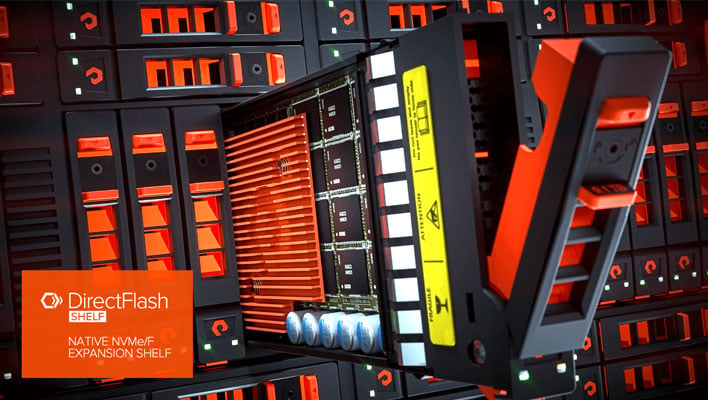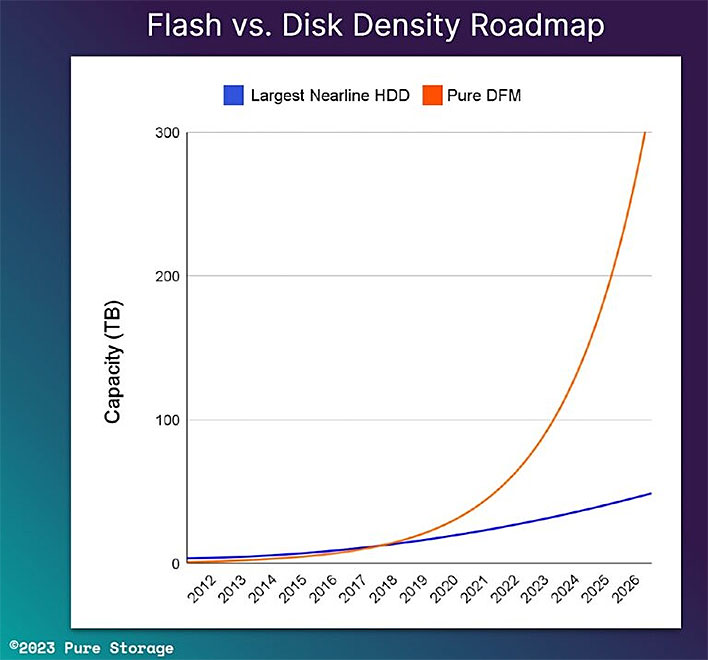Pure Storage Claims Its Monster 300 Terabyte NVMe SSDs Are Coming For Data Centers

The world's first commercial flash-based solid state drive checked in at a meager 20MB when it shipped over three decades ago. A lot has changed since then and these days 1TB and 2TB SSDs are commonplace, while 4TB and even 8TB SSDs lay on the fringe of high-end consumer systems. Bigger capacities are available in the data center, and at least one company has outlined a roadmap to offering a truly monstrous 300TB NVMe SSD in the not-too-distant future.
That company is Pure Storage and it's planning to add a massive-capacity 300TB storage solution to its Direct Flash Module (DFM) product line. These drives combine 3D triple-level cell (TLC) or quad-level cell (QLC) NAND flash memory chips with enterprise-class controllers, and leverage a standard U.2 NVMe interface for use with the company's FlashArray and FlashBlade storage systems.
At present, the company ships DFM solutions up to 48TB in capacity, but it anticipates a more than six-fold increase over the next few years.

Source: Pure Storage
"The plan for us over the next couple of years is to take our hard drive competitive posture into a whole new space. Today we’re shipping 24 and 48TB drives. You can expect … a number of announcements from us at our Accelerate conference around larger and larger drive sizes with our stated ambition here to have 300TB drive capabilities, by or before 2026," Pure Storage CTO Alex McMullan told Blocks & Files.
If Pure Storage can deliver on its claim, it would leave mechanical hard disk drives (HDDs) in the dust, in terms of raw capacity. To wit, Seagate has mapped out a path to offering 50TB HDDs in the next couple years and 100TB HDDs by 2030.
McMullan is confident the company will meet its target as chip fab vendors increase their layer counts. He says chip fabs are currently "shipping us somewhere between 112 and 160 layers," and notes that each one of them has a "plan and a path to get to 400-500 layers" over the next several years.
Increasing the layer count as such isn't sufficient by itself to bump SSD storage up to 300TB, but when combined with other solutions—like shipping bigger drives that cram more chips—it becomes viable.
The obvious caveat, of course, is the cost of SSD storage compared to bulk HDDs. To that end, McMullan suggests the annualized TCO (total cost of ownership) versus HDD solutions is steadily declining. He points out that each FlashBlade chassis can fit 10 blades, and each of those blades can hold four DFM solutions. That equates to 12 petabytes of raw storage capacity when 300TB arrives (10 blades times 4 DFMs times 300TB).

